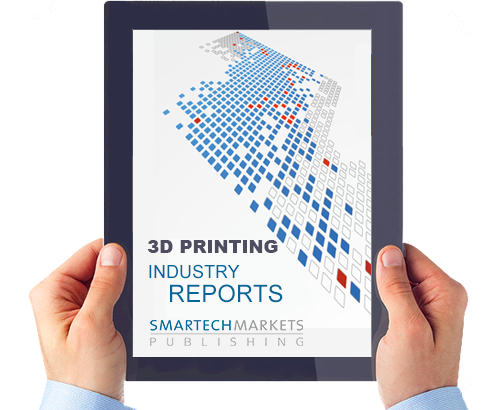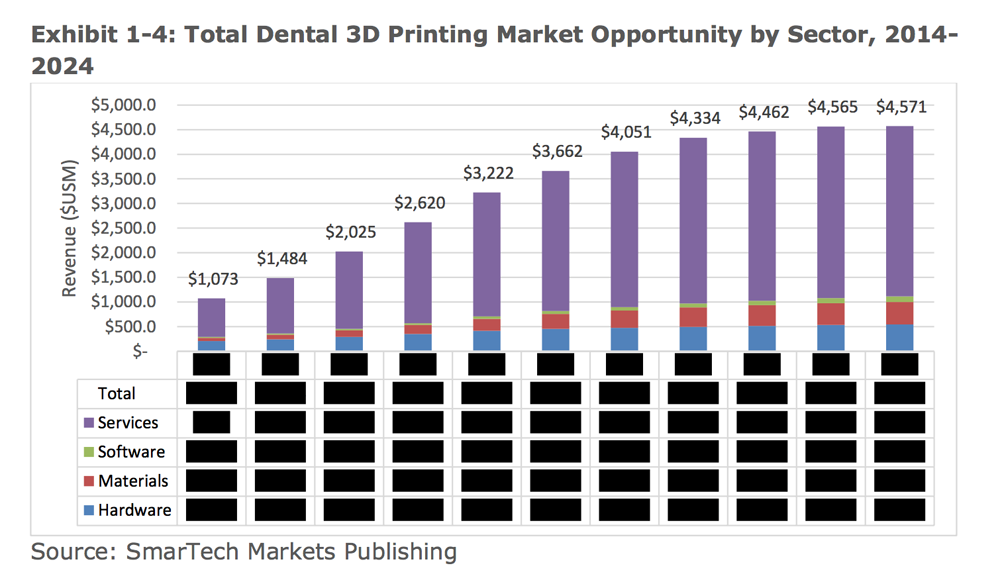Over the last few months, SmarTech has published three reports focusing particularly on the three industries where 3D printing is widely expected to see rapid and real, transformational growth – jewellery, medical, and dental. 3D printing technology today has matured to a point where the printers and materials are viable enough to effectively deliver the highly complex, highly accurate, and low- to mid-volume requirements unique in these industries. SmarTech sees the growth in the dental market unique enough to merit its own analysis, since “no other industry currently adopting 3D printing has the same combination of high value, high performance, and high volume parts required by the dental industry, making 3D printing a near perfect fit for true disruption and game changing capability compared to existing traditional methods of production.”
Their latest report, released in May, is titled ‘3D Printing in Dentistry 2015: A Ten Year Opportunity Forecast and Analysis’ and presents itself as “the only independent study of 3D printing specifically in dental markets available today.”
Just as with hearing aids, which are mostly 3D printed now, dentistry has begun to not just explore but actually realize the comparative advantage of using 3D scanning, modeling, and printing tools. Scott Dunham, senior business analyst at SmarTech, believes that the dental industry “will be the most radically changed by 3D printing in the next decade when we look at where it’s at today versus what it will look like thanks to 3D in the next five to ten years. Part of that is because the methods used today for fabrication of dental restorations are surprisingly primitive.”
More and better industrial grade 3D printers and materials are being made to cater specifically to this sector, software and scanning technologies have already improved significantly, and all of these are now better integrated to provide end-to-end dental solutions. Dental labs around the world have already introduced these technologies into their workflow, using it to create accurate anatomical models of teeth and gums, dental implants such as crowns, caps, bridges, abutments, screws, aligners, dentures, and surgical tools such as drill guides. SmarTech sees the current value of 3D printing in dental to “already be worth $780 million in revenues, as metal sub-structures for crowns and bridges in cobalt chromium, tooling for production of clear aligners, wax casting molds for restorations, and dental models are being produced in high volume by dental laboratories worldwide.”
Looking into the future for dentistry, the report predicts that because of the drastic improvement over existing traditional methods that 3D printing technology provides, its “penetration in specific applications will reach more than 60 percent of overall dental production in the next ten years, and perhaps even higher in certain areas such as dental modeling.” The leading 3D printing companies that are aggressively enabling this transformation in the dental sector are 3D Systems, Stratasys, Argen, BEGO, Concept Laser, DWS, EnvisionTEC, EOS, Prodways, and Solidscape.
The report forecasts the value of hardware, materials, and printed components enabled by 3D printing in dentistry to hit $3.1 billion by 2020, crossing $2 billion next year. They also note that total sales of 3D printing systems to dental labs or professionals, which is currently at $240 million, will double by 2020. To check out further details about this report, visit here.





